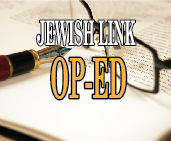Parshat Vayigash
Few are those familiar with the Tanach who are not acquainted with Yechezkel’s vision of the valley of the dry bones. The 37th perek of Sefer Yechezkel paints a magnificent picture of a nation that believed that they are nothing more than dry bones, that they are doomed in the exile and have no hope for the future. The navi’s vision of Hashem lifting the bones out of their graves, covering them with sinew and flesh and breathing life into them struck a sensitive chord in the souls of the despondent people and filled them with hope. Indeed, this prophecy was once required study in Israel, obligating both the religious and the not-yet-so to memorize the entire text. In fact, even the early secular founders of the modern Zionist movement saw in the prophet’s words a message to their generation and contrasted their feelings with those of Israel during Yechezkel’s time. For, while the people long ago cried “avda tikvateinu,” “we have lost our hope,” Naftali Tzvi Imber wrote into the Zionist anthem “Hatikva” the words “Od LO avda tikvateinu,” “We have not yet lost our hope”!
Yet, as familiar as Yechezkel’s prophecy might be, few realize that this week’s haftarah is a continuation of that very prophecy! In it, we read of Hashem’s command to Yechezkel that he take two pieces of wood (or two branches) and write upon one stick “Yosef” and upon the other “Yehuda.” He is then commanded to place both sticks into his hand where they would become one. The symbolism of the act is made clear to the people as the navi is commanded to explain to them how, in the future, the two kingdoms would return to their land and would merge into one, never to be divided again. In many ways, the latter part of the prophecy echoes the theme of the earlier “dry bones” prophecy of return to the land. But this nevuah goes into even greater detail, portraying a time when the repentant people would be ruled by the scion of the Davidic dynasty and how they would settle the land of their forefathers and remain there forever. Additionally, Yechezkel portrays a future during which the Beit HaMikdash would be rebuilt, when there would be economic success and when the nation would be blessed with peace.
The prophet’s vision of Yehuda and Yosef uniting as one is the obvious connection to our parsha. It was their reunion of which we read in our Torah reading that brought the years of division to an end. It was their actions that united Yaakov’s family and, thereby, created the nation of Israel. It is also important to remember that, throughout our history, the descendants of these two brothers served as rulers of the nation, much as their respective forefathers were clearly the leaders of their brothers. It is indeed no coincidence that it was the leader of the tribes of Yosef who rebelled against the rule of the king from Yehuda, nor that the two kingdoms were called by their names.
Perhaps most importantly, the juxtaposition of these two nevuot of Yechezkel would seem to tell us that being taken out of the graves and being brought back to life will not be enough to complete the geula process. For that to happen it will require the symbolic taking of the two sticks and placing them into the hands of man, not God. For, uniting our people together that could hasten the arrival of the Mashiach will not be done by Hashem.
Only we can do that!
And we must!
Rabbi Neil Winkler is the rabbi emeritus of the Young Israel Fort Lee and now lives in Israel.










